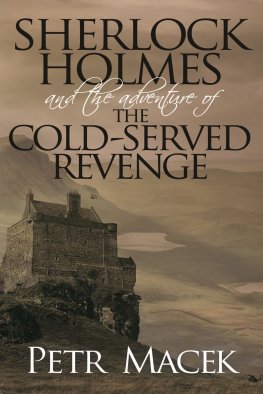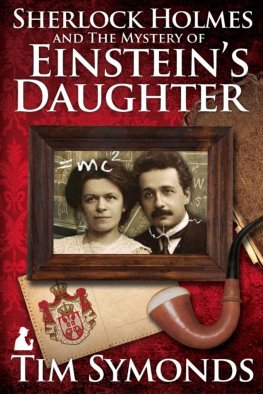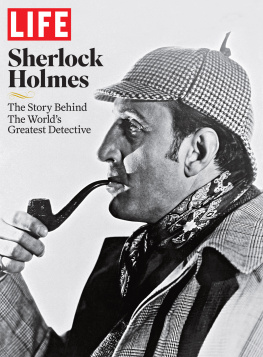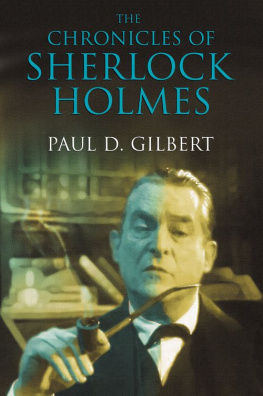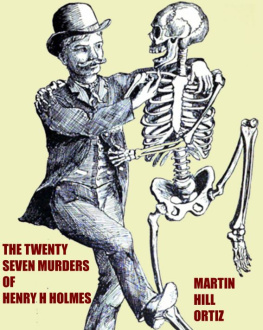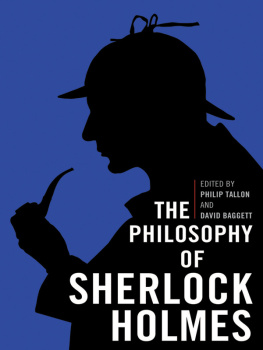Published by The History Press
Charleston, SC
www.historypress.net
Copyright 2017 by Erik Ofgang
All rights reserved
Front cover: Courtesy of Joe Mabel.
First published 2017
e-book edition 2017
ISBN 978.1.62585.656.2
Library of Congress Control Number: 2017931796
print edition ISBN 978.1.46711.852.1
Notice: The information in this book is true and complete to the best of our knowledge. It is offered without guarantee on the part of the author or The History Press. The author and The History Press disclaim all liability in connection with the use of this book.
All rights reserved. No part of this book may be reproduced or transmitted in any form whatsoever without prior written permission from the publisher except in the case of brief quotations embodied in critical articles and reviews.
To the actor, the writer and the detectiveA great actor is his character.
William Gillette, 1914
Contents
Acknowledgements
This book came about after I wrote a series of stories on Connecticut castles for Connecticut Magazine in 2014. This series was launched thanks to the enthusiastic support of my editors at that time, Ray Bendici and Douglas Clement. Both Ray and Doug were integral in helping me find more Connecticut castles to write about and in encouraging me to leave the office in search of the spires and towers of the Nutmeg State. This series caught the attention of the team at The History Press, who asked if I would be interested in writing a book about Gillette Castle. This was a wonderful coincidence as I had already been mulling over the idea of doing something more on the King of Connecticut castles. I felt it was so much more than just a building and provided a very real link with a man who had helped create our modern image of Sherlock Holmes. When The History Press and I agreed to go forward with this book, I began two years of research that would lead me through dusty archives and old building sites and ultimately reward me by increasing my understanding of one of historys greatest actors.
As I followed the surprisingly sparse clues about William Gillettes life, I was indebted to a number of people who pointed my research efforts in the right direction. The assistance of Alan Levere, a historian with Connecticuts parks system, was invaluable. He provided me with digital copies of hundreds of archived newspaper clippings concerning Gillette, as well as many of the images found in this book. Janice Nowik, president of Friends of Gillette Castle, was gracious with her time and knowledge, and her support for the project was integral. The afternoon I spent with Harold and Theodora Niver, aka Mr. and Mrs. Gillette, was among the most rewarding of my many visits to the castle, and both of them were generous in sharing their story and their ample knowledge of all things Gillette. The staffs of the Mark Twain House and Museum and the Harriet Beecher Stowe Center were also extremely helpful when I visited both institutions early on in my research.
I quickly found that when it comes to the history of William Gillettes life all roads lead to and emanate from one seminal work on the actors life: William Gillette, Americas Sherlock Holmes by Henry Zecher. Exhaustively researched and painstakingly detailed, this seven-hundred-plus-page biography was my beginning guide to the actor and one that I found consistently helpful. Zechers book remains the final word on the life of William Gillette and the number-one resource for those seeking to learn more about him, and I am indebted to the work.
Thanks must also be given to the staff I worked with at The History Press, particularly Chad Rhoad, who oversaw the final stages of the project.
Additionally, I must thank my parents for always encouraging my writing and taking me on a day trip to Gillette Castle as a child that led to a lifelong fascination with the place, as well as my wife, Corinne, who accompanied me on most of my visits to the castle and sacrificed many a weekend helping me search through old newspaper clippings.
Finally, thanks to the staff at Gillette Castle for passionately preserving such a singular spot and so many great stories and pieces of history. I hope this work will help in answering the many questions of curious guests who fall under the castles spell.
Introduction
Sherlock Holmes was dead.
There was no mystery as to the cause of death; it was murder. The great consulting detective had been killed in the 1890s, allegedly at the hands of Professor James Moriarty, criminal mastermind of London and Holmess only intellectual equal.
But one did not need Holmess deductive abilities to discern there was more to the case than met the eye. Moriarty, it soon became clear, was only a stand-in for the true culprit, one Arthur Conan Doyle, an Edinburghtrained physician and writer of Scottish descent. Inspired in part by Joseph Bell (a surgeon at the Royal Infirmary of Edinburgh, whom Doyle had worked with and who was known for drawing accurate conclusions from small observations), Doyle had introduced Holmes to the literary world in 1887 in A Study in Scarlet. Over the next few years, the characters popularity would grow with the publication of subsequent books and short stories, but Doyle soon grew tired of the London detective who lived at 221B Baker Street and endeavored to do away with him once and for alleven if I buried my banking account with him, he wrote in his autobiography.
With uncharacteristic cruelty, Doyle killed off his most famous creation, leaving poor Dr. WatsonHolmess sidekick and narrator of all but four of his storiesdazed with the horror of the thing.
Doyle, however, felt little remorse. If I have sometimes been inclined to weary of him, it is because his character admits of no light or shade, he said of Holmes. He is a calculating machine, and anything you add to that simply weakens the effect.
A modern-day look at the exterior of Gillette Castle. Courtesy of Connecticuts Office of Tourism.
Doyle meant for Holmess death to be permanent. In fact, the character seemed destined to fade out of the public consciousness like many oncepopular literary detectives who had come before him, including Edgar Allan Poes C. Auguste Dupin, a possible inspiration for Holmes.
Yet Holmes was not destined for the dustbin of history. He narrowly escaped that fate thanks to an actor on the other side of the Atlantic, an actor whose once-legendary performances have been all but forgotten outside theater history circles but whose reinvention of Holmes helped transform the detective from a deceased and short-lived character into a cultural phenomenon that has survived for more than one hundred years and is destined for immortality.
That actor also left a mark on the character that has been unintentionally imitated by every actor to portray himfrom Basil Rathbone to Robert Downey Jr. and Benedict Cumberbatch. Along the way, this actor amassed a great enough fortune to build a Connecticut castle unlike any mansion that has been built before or since, a place that a century after its creation is still full of mystery.


